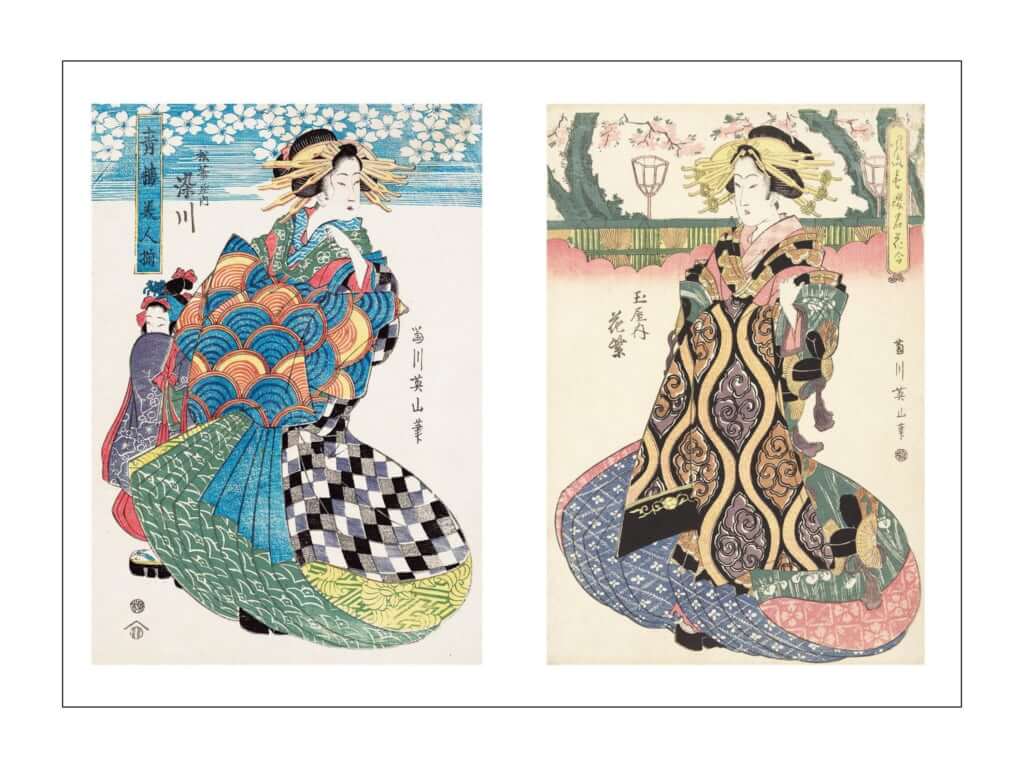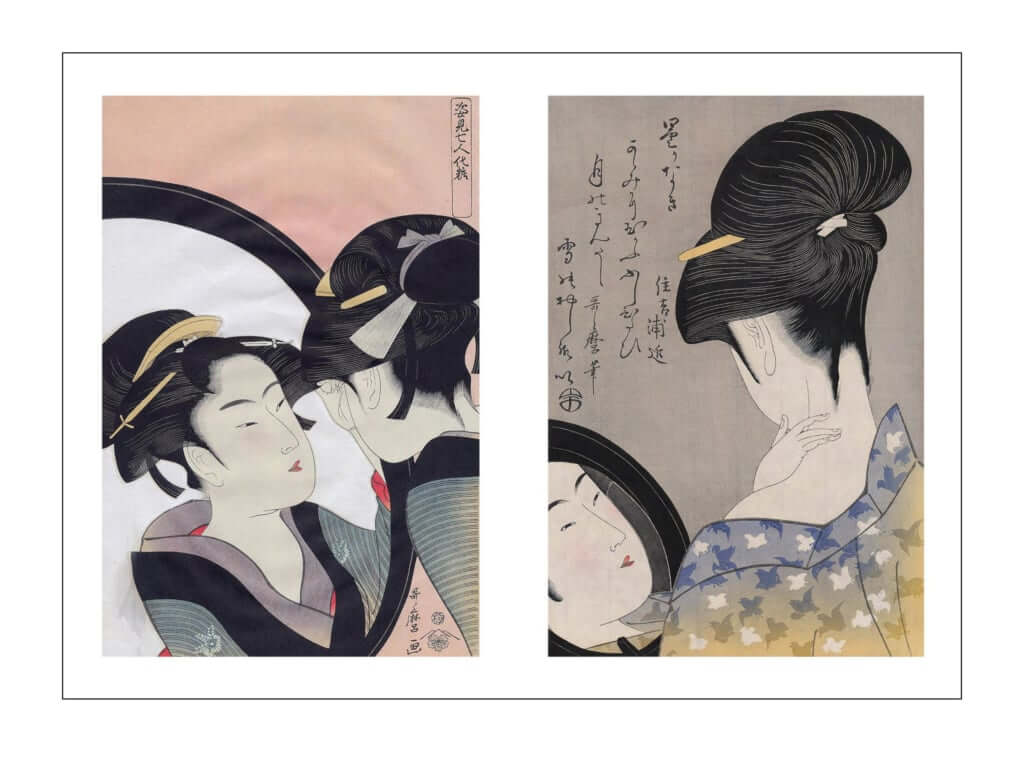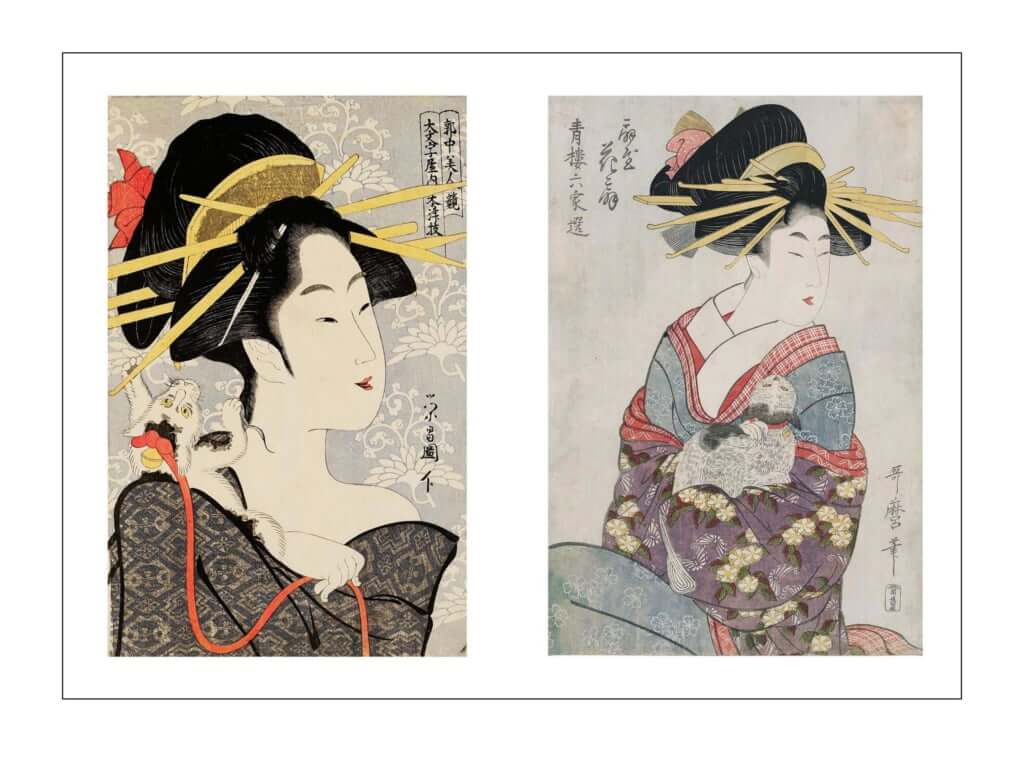Engravings as an Ode to Feminine Grace
The book 'Women Celebrated by the Great Masters of Engraving' features 'bijin-ga', images of beauties with perfect features.

© Éditions Hazan
Women dressed in colourful kimono, sometimes gazing at their reflection in a mirror and other times putting a lock of hair back in place in their chignon, practising ikebana, the Japanese floral art, or admiring the cherry blossoms in bloom. The one hundred images compiled in the book Les femmes célébrées par les grands maîtres de l’estampe (‘Women Celebrated by the Great Masters of Engraving’) by Amélie Balcou showcase the beauty of Japanese women during the Edo period (1603-1868).
These engravings, most of which depict courtesans, but also young girls and mothers with fine features, a proud bearing, and delicate gestures, are known as bijin-ga, which translates literally as ‘beautiful people’, even if in reality, they only represent women. This artistic genre, popularised at the beginning of the Edo period, achieved great success with the chonin, members of the new urban and merchant bourgeoisie.
Finely worked details
The book, with its multiple pieces reproduced in leporello format—a layout where the images appear on sheets folded like an accordion—extends to infinity. The reader can admire the work of the most iconic figures in engraving, such as Katsushika Hokusai, Kunisada Utagawa, and Utamaro Kitagawa, in which, in addition to reproducing the perfect beauty of women, particularly close attention is paid to details: the delicate colours of the kimono, the refined hairstyles, and the richness of the outfits worn by the courtesans.
Les femmes célébrées par les grands maîtres de l’estampe (‘Women Celebrated by the Great Masters of Engraving’) (2019) is a book published by Editions Hazan.

© Éditions Hazan

© Éditions Hazan
TRENDING
-
A House from the Taisho Era Reveals Its Secrets
While visiting an abandoned building, Hamish Campbell discovered photographs the owner had taken of the place in the 1920s.

-
The Taboo-Breaking Erotica of Toshio Saeki
The master of the 1970s Japanese avant-garde reimagined his most iconic artworks for a limited box set with silkscreen artist Fumie Taniyama.

-
With Meisa Fujishiro, Tokyo's Nudes Stand Tall
In the series 'Sketches of Tokyo', the photographer revisits the genre by bringing it face to face with the capital's architecture.

-
Masahisa Fukase's Family Portraits
In his series ‘Family’, the photographer compiles surprising photos in which he questions death, the inescapable.

-
Hajime Sorayama's Futuristic Eroticism
The illustrator is the pioneer for a form of hyperrealism that combines sensuality and technology and depicts sexualised robots.





